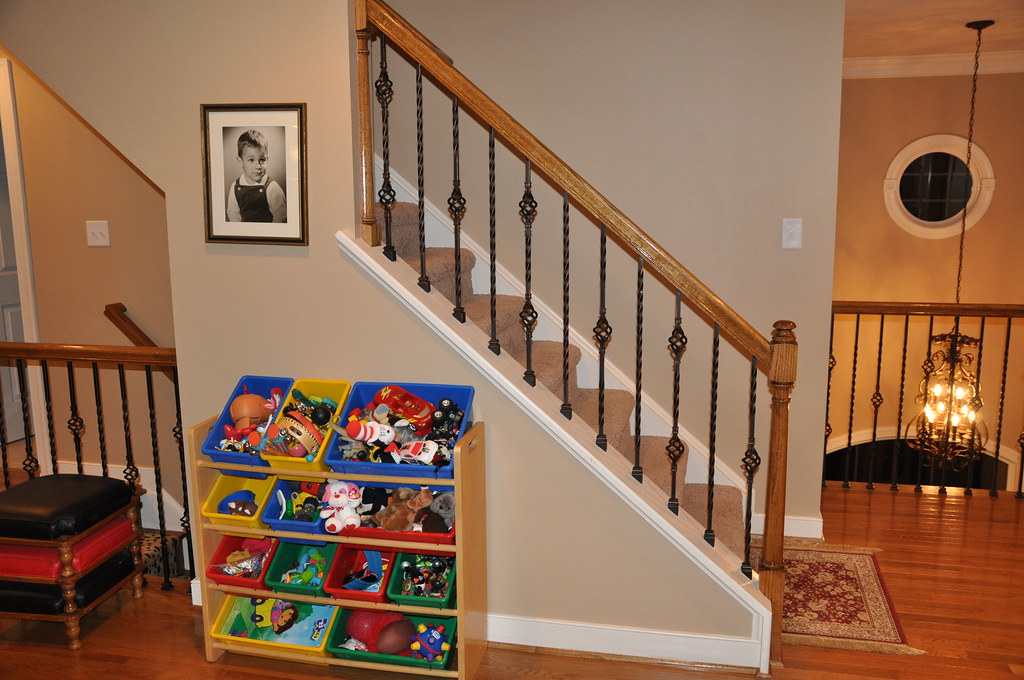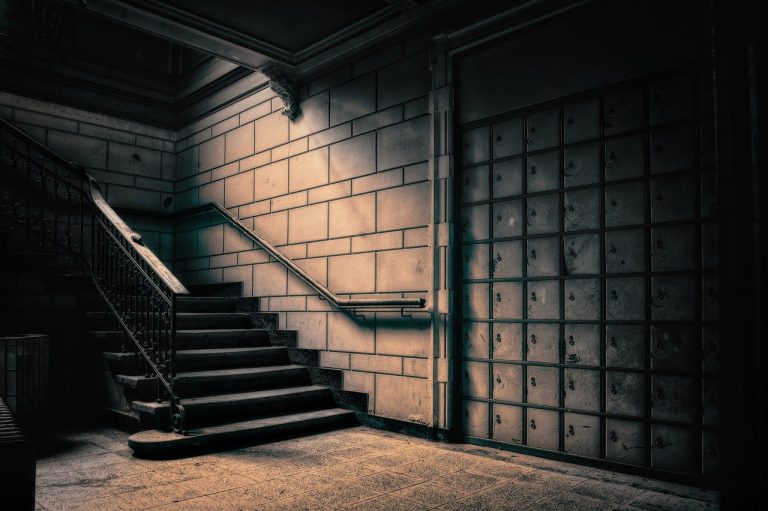In this article, we will discuss how to design a basement stair railing. The construction of a rail for a staircase is a simple and easy step by step tutorial for anyone interested in renovating their home.
Basement stair railings are essential to any home’s safety and design. They provide support and stability when navigating the stairs and add to the space’s aesthetic appeal. The type of railing you choose can greatly affect your basement’s overall look and feel, from traditional wood or wrought iron to sleek and modern metal or glass designs.
Additionally, the color and finish of the railing can complement or contrast with the surrounding walls, floors, and decor. When selecting a basement stair railing, it’s important to consider both practicality and style to create a cohesive and functional space that meets your needs and preferences. Whether you prefer a classic or contemporary look, countless options are available to enhance your basement’s safety and appearance.
Designing a basement stair railing
Designing a basement stair railing is not complicated if you follow these simple instructions. A railing design can be as simple as you like or as decorative as you like. If you choose a stair rail that serves as a secondary handrail (meaning it is lower than the height of the central barrier) and has balusters spaced 16 to 18 inches apart, then your steps will be straightforward.
Stair railing height
The height of your railing must be determined before you can proceed to the actual design and construction process. This is one thing that must not be overlooked because it could pose a safety hazard if proper regulation is not followed. The standard height for basement stair railings should be 34 inches above the nose (the starting point) of any stair tread or step.
Space between balusters
Balusters are the vertical members of a railing system that separate and support one baluster above another to add strength and look aesthetically lovely. The spacing between balusters should be 16 to 18 inches apart. If you decide to make your railings with less spacing, then each rail will need more material and sturdiness (by adding thickness) for support.
Materials
You can use lumber (treated/untreated), PVC pipes, vinyl, stainless steel, or any other suitable material long enough to carry out your designs properly. You can get these materials at home improvement stores such as Home Depot or Lowes. You cannot find them in your local hardware store or lumber yard.
Staircase railing designs
There are many different types of stair railing designs available for homeowners to choose from. This will depend on your preference and what you think would look lovely in your home. In general, a simple design is better because the simpler it is, the fewer mistakes will be made during installation. You can create a custom handrail by combining balusters and newel caps with a 2×4 rail cap to make a stylish and sturdy-looking railing system that suits your needs perfectly.

Other features
Another feature you may want to include in your basement stair railings project is adding glass inserts. These inserts can also be gorgeous if combined with semi-transparent material so you can still see through to the other side. It is also possible for you to add ornamental spindles, panels, and pickets if you like.
Planning your gap between balusters
How much gap you leave between each baluster depends on how wide or narrow you want it to look, so make sure you take this into account before making any final decisions. The gap between 1 and ½ inches is the standard gap. If you decide on a more significant crack, then this can affect the stability of your railing and could result in safety issues.
Read More: https://magzinera.com/cracks-in-basement-floor/
Installing the stair railings
All that is left to do once all materials have been chosen, cut, and measured accordingly is to install everything and make sure it looks good and meets safety requirements (34 inches above the nose of each step). Anchor balusters securely with nails or screws by drilling pilot holes through them at an angle which should be one inch from the top and bottom of the baluster. Nail caps over nail heads for a more finished appearance after the installation has been completed.
Basement stair railing cost
If you have a new staircase, it would be best if the contractor installed the railing. Newels, balusters, and railings can also get very expensive. If you are not up to doing it yourself, you might want to call a local handyman service and find out how much they charge. It does depend on where you live, who did your work, how big your stairs are etc. A wide range of costs can occur, but don’t pay more than 90% of that price, whatever that number may be.
What kind of material is ideal for a railing on stairs?
A timber railing can cost between $30 and $70 per square foot, whereas an aluminum one would cost between $70 and $80 per square foot, depending on the material. Balusters cost between $1,200 and $1,600 on average, with each baluster costing between $3 and $17 before installation.
FAQs
How much should I expect to pay for stairs like these?
Typically an installation would cost between $400 and $700, but you may want to opt for a more elaborate style, increasing the price. This type of project is an average DIY job that will require essential tools and materials. First, determine if your stairs are standard or custom-built, which will impact the cost considerably. Then make an appointment with a stair contractor to get at least three estimates.
It doesn’t hurt to get more since other companies may offer better rates if their overhead is lower. Discuss what’s included in their quotes (material costs, labor, etc.) so you know you’re comparing apples to apples. Keep in mind that cheaper is not always better when it comes to stair building materials.
Is there anything I can do to save money on my basement stairs?
You could always try refinishing or repairing your existing steps instead of installing new ones, but this will not be as durable, and you’ll need to maintain the surface. For example, if the stairs are made from wood, they’re likely rotted and will require replacement boards before installation begins. Construction staples may also be used to hold warped boards in place, so those will need to be replaced, which can add up quickly depending on the length of your stairs.
A new stairway is usually the best option if you’re on a tight budget, but you can save some money by repairing any loose or broken parts before installation begins. A little bit of labor will require some elbow grease, but it’s far better than paying for brand new materials after all work has been completed.
How do I find a trustworthy contractor?
Hire insured and licensed in your state, so there are no issues with the job down the road. Request references from previous customers so you can ask about their overall experience with the contractor. It never hurts to invest more time into researching reliable options before moving forward with any project!
Apart from this if you are interested to know more about Pros and Cons of Moroccan-style Tiles then visit our business category.
